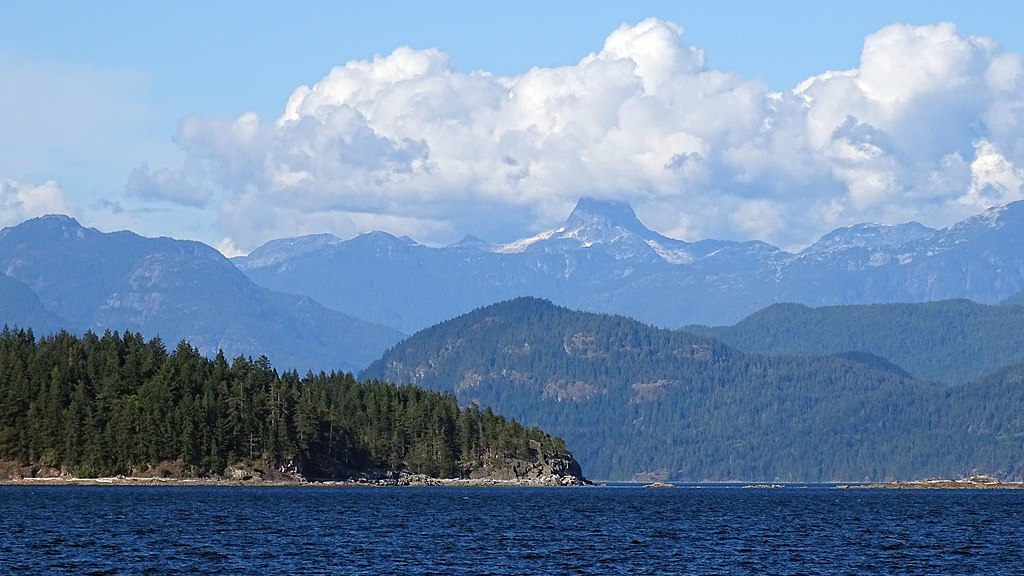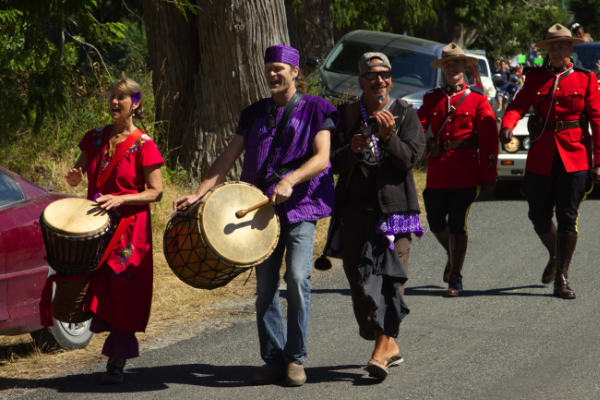The Land
Tucked away in the Salish Sea, Cortes Island is known for its pristine wilderness. Towering forests meet rugged coastlines, and crystal-clear waters team with marine life. Breathtaking vistas arrive at nearly every turn, and the island’s dynamic ecosystem provides possibilities for plenty of wildlife spotting.
History
The Klahoose and Tla’amin First Nations are the region’s first human inhabitants. For thousands of years, these Indigenous communities thrived on the island’s abundant natural resources. Salmon, shellfish, and cedar were the basis for food, tools, and cultural practices.
In the late 19th and early 20th centuries, European settlers arrived. Drawn to the lush forests and fertile land, they established logging and fishing industries, shaping the island’s economy and landscape. Small communities emerged along the coastline, sustained by logging camps, fishing operations, and small-scale agriculture.
In the mid-20th century, Cortes Island became a haven for communal living and countercultural movements. The island attracted artists, activists, and individuals seeking alternative lifestyles. This era saw the establishment of intentional communities and eco-villages. Hollyhock and Linnaea Farm are the most well-known. Today, they operate as educational hubs for sustainable living and holistic education.
Today
Cortes’s remoteness makes it a truly special destination. It is a natural wonderland, and it offers a wealth of opportunities for recreation, nature appreciation, and environmental education.
Whether hiking through ancient cedar groves, kayaking along a picturesque shoreline, or simply lounging on a tranquil beach, one can tap into a profound connection with nature. Cortes Island has numerous provincial parks, with Smelt Bay, Hanks Beach, Hague Lake, The Whaletown Commons, and Carrington Bay being the most well-known. Each offers unique opportunities for outdoor recreation and exploration.
The island retains its rural charm and continues to attract residents and visitors seeking refuge from urban life. While logging and fishing remain important industries, the island’s economy has diversified to include tourism, organic farming, and artisanal crafts.

Cortes Island Resources
Community Info
Cortes Tidelines Online Bulletin Board
Transportation:
What’s Happening on Cortes:
Cortes Currents is a web site and radio program asking what’s current on Cortes and beyond? crosscurrents.ca
Listen on Cortes Radio, CKTZ 89.5 FM: (some) Saturdays at 1 PM | Tuesdays at 5 PM | Wednesdays at 9 AM
Popular Spots on Cortes
Carrington Bay
Carrington Bay Provincial Park is a hidden gem. Rugged coastlines and lush coastal rainforests support its secluded beaches and tranquil coves. Accessible only by boat or hiking trail, it provides a remote wilderness experience. It is an alluring destination for those seeking solitude and wild beauty. Visitors can explore the park’s extensive network of hiking trails leading to scenic viewpoints, waterfalls, and ancient First Nations pictographs.
Desolation Sound
Just a short boat ride away is one of British Columbia’s most renowned marine parks, Desolation Sound. Towering mountains surround its dramatic fjords and crystal-clear waters. A playground for outdoor enthusiasts, sailing, fishing, and kayaking are popular pursuits in its sheltered waters. Teeming with wildlife both above and below the water, visitors regularly spot bald eagles soaring overhead, and seals basking on rocky outcrops. Some also enjoy encounters with orcas, humpback whales, or porpoises swimming in the deeper waters.
Smelt Bay
Named after the annual run of smelt fish that used to occur there, Smelt Bay is a popular destination for picnicking, swimming, and sunsets. It boasts expansive sandy beaches framed by forested cliffs and panoramic views of the Georgia Strait. Its picturesque setting is perfect for leisurely strolls, and interpretive signs along the trails provide insights into the area’s history, ecology, and indigenous heritage. The calm waters are favoured for swimming, kayaking, and paddleboarding, and numerous tide pools come into view when the tide stretches out. Smelt Bay has amenities such as picnic tables and restroom facilities and is perfect for family-friendly outings.
Hague Lake
Hague Lake, near Manson Village, is a picturesque freshwater lake surrounded by lush forest. Organizations such as the Friends of Cortes Island and the Cortes Island Museum & Archives have played key roles in preserving its shores. Visitors delight in swimming, fishing, and canoeing in its calm waters, and during the summer, families gather along its shores and partake in hiking trails that meander around and from the lake, with Mansons Lagoon just a short stroll away.
Mansons Lagoon
Mansons Lagoon on the southwest overlooks the Strait of Georgia. Loved for its shallow waters, sandy beaches, and extensive tidal flats, Smelt Bay is an important habitat for a diverse array of plant and animal species. It is a prime destination for beachcombers at low tide. The exposed mudflats teem with marine invertebrates, which attract shorebirds and other coastal species. It also has a government dock and serves as a launch point for kayaks and boats.
Whaletown Commons
The Whaletown Commons has long been a focal point for community conservation efforts. In the 1980s, the community rallied together to protect this ecologically valuable land, and now it is a community-managed 136-acre green space. A network of trails winds through mature Douglas fir and Western red cedar forests. Meadows, and wetlands, host a diverse array of flora and fauna. Bald eagles, herons, and songbirds are some of its regular residents, and there are a plethora of possibilities for hiking, birdwatching, and nature photography.
The People
The community of Cortes Island has a rich and diverse history, shaped by the presence of First Nations peoples and subsequent waves of settlers who arrived after. The Klahoose and Homalco Nations, have inhabited the region for thousands of years, relying on the abundant natural resources of the land and sea for sustenance and cultural practices. They have left a significant mark on the island’s landscape and culture with archaeological sites and traditional knowledge continuing to hold value to the modern-day inhabitants of Cortes.
European exploration and settlement began in the late 18th century, with Spanish and British explorers charting the coastal waters of what would become British Columbia. In the 19th century, European settlers began to establish permanent communities on Cortes Island, drawn by its fertile land and abundant resources. Logging, fishing, and farming became important industries, shaping the island’s economy and culture for generations to come.
Cortes Island continues to attract a diverse array of individuals and families seeking a deeper connection to nature. Today’s island community is characterized by a tight social fabric, a strong sense of environmental stewardship, and a commitment to sustainable living. Residents come from a variety of backgrounds, including artists, artisans, farmers, and outdoor enthusiasts. Drawn to Cortes’s natural beauty and warm community, Cortesians are enmeshed in a busy and vibrant social landscape that hosts numerous events and showcases for residents and visitors.

From farmers’ markets and art festivals to environmental conservation projects and community gatherings, there is always something happening on the island. So many are involved in local initiatives and organizations, and there is a strong sense of place and commitment to preserving the island’s natural heritage for future generations.